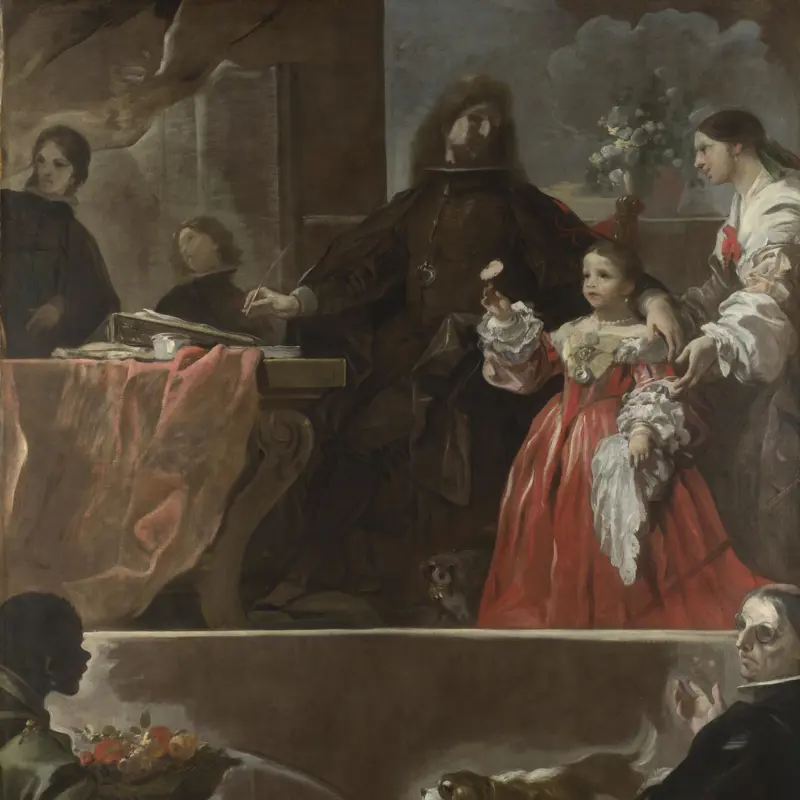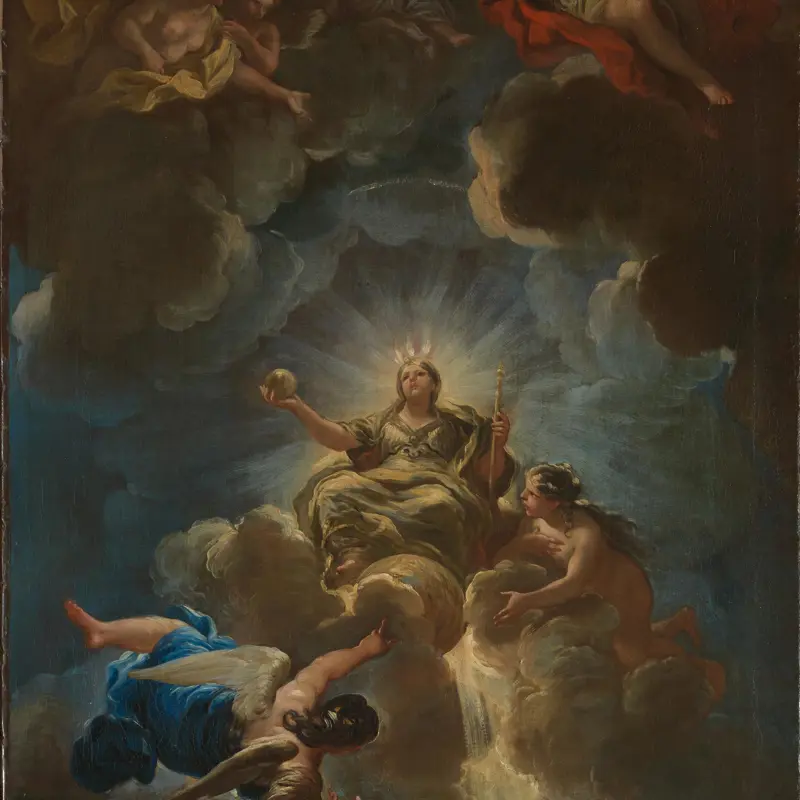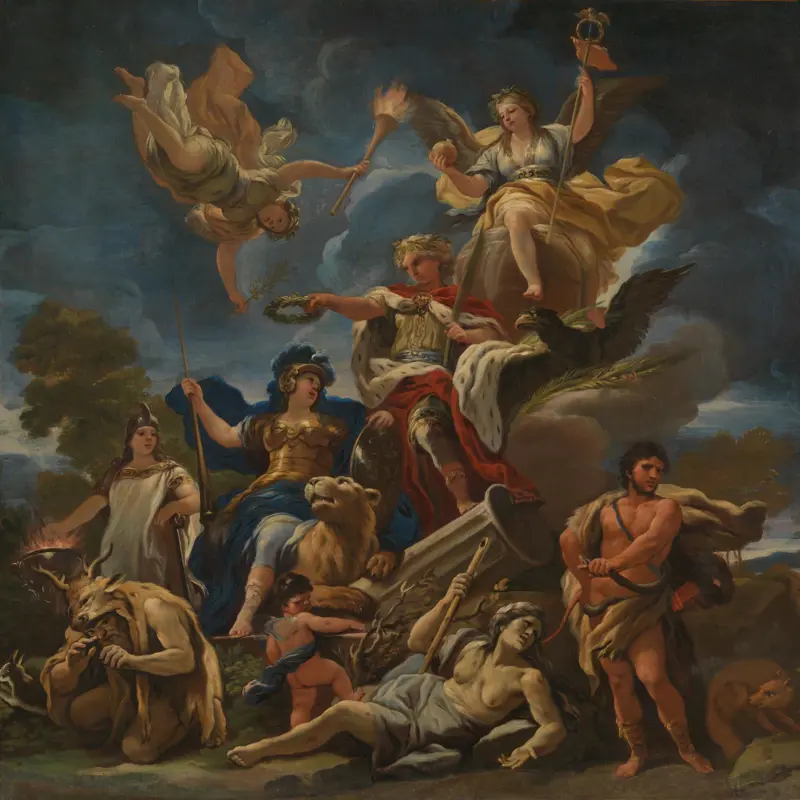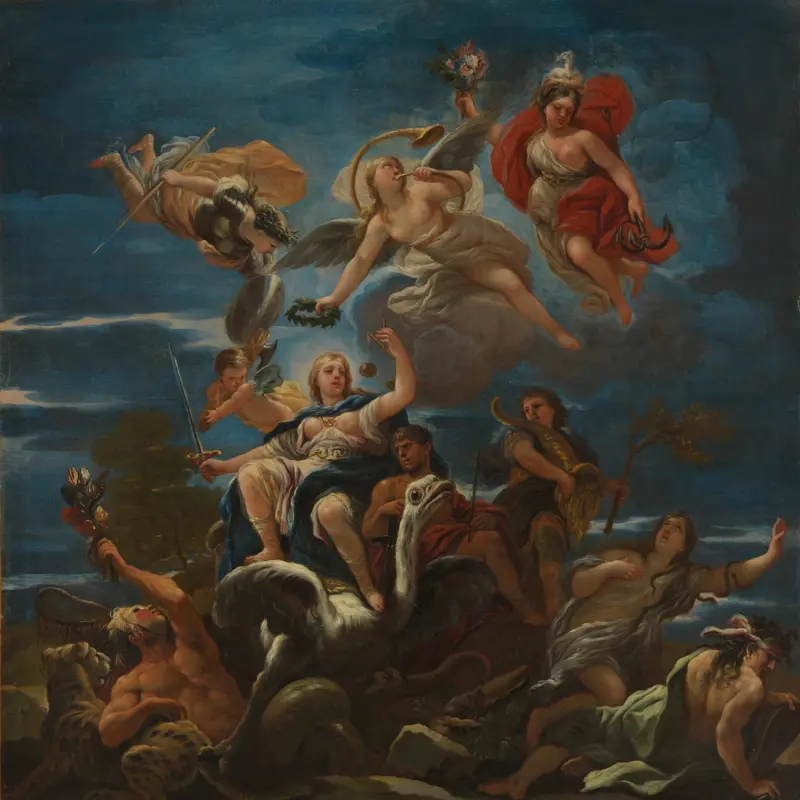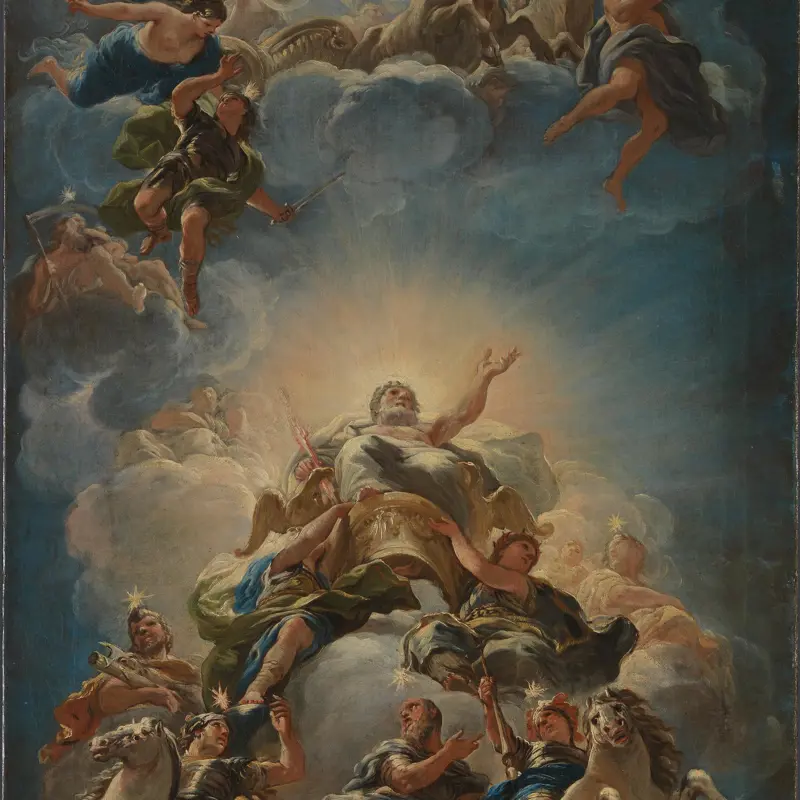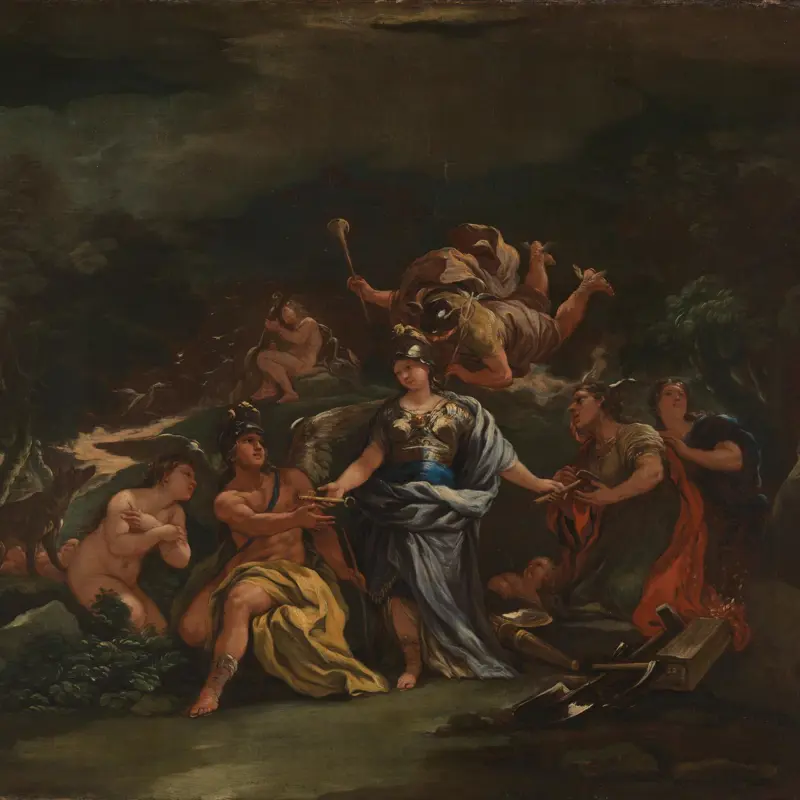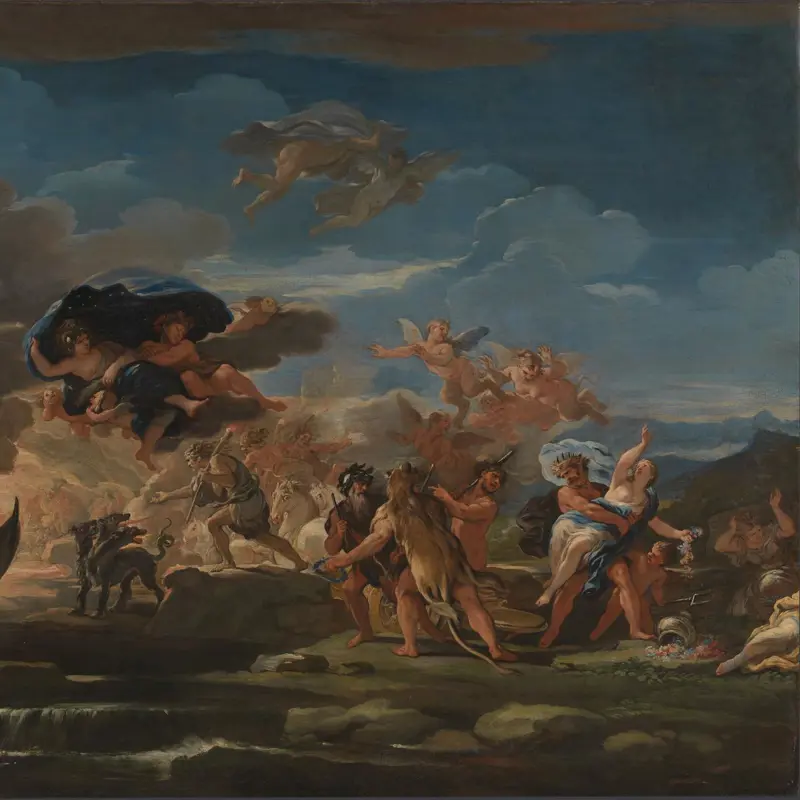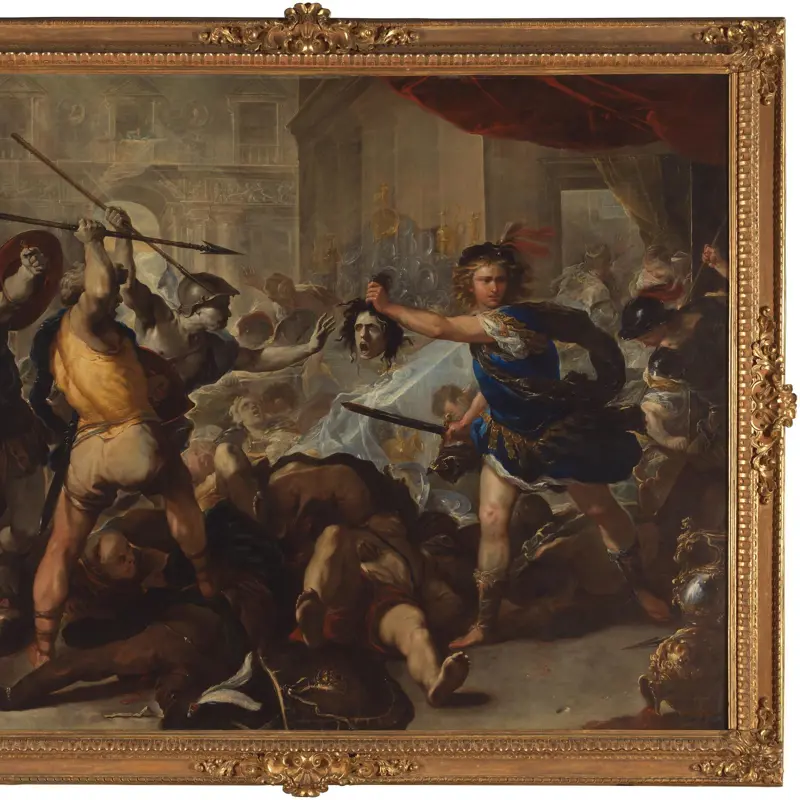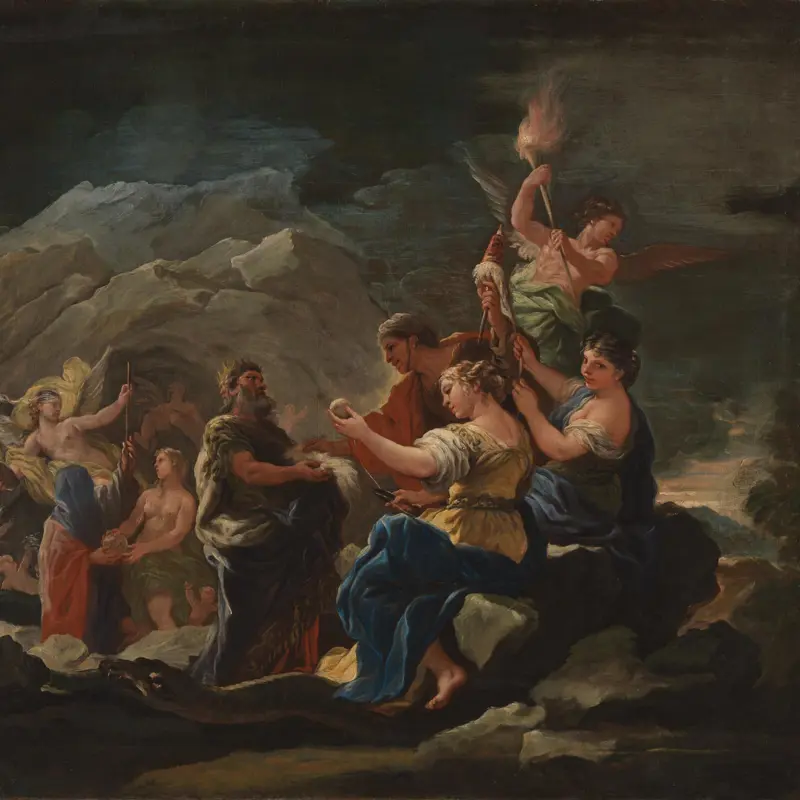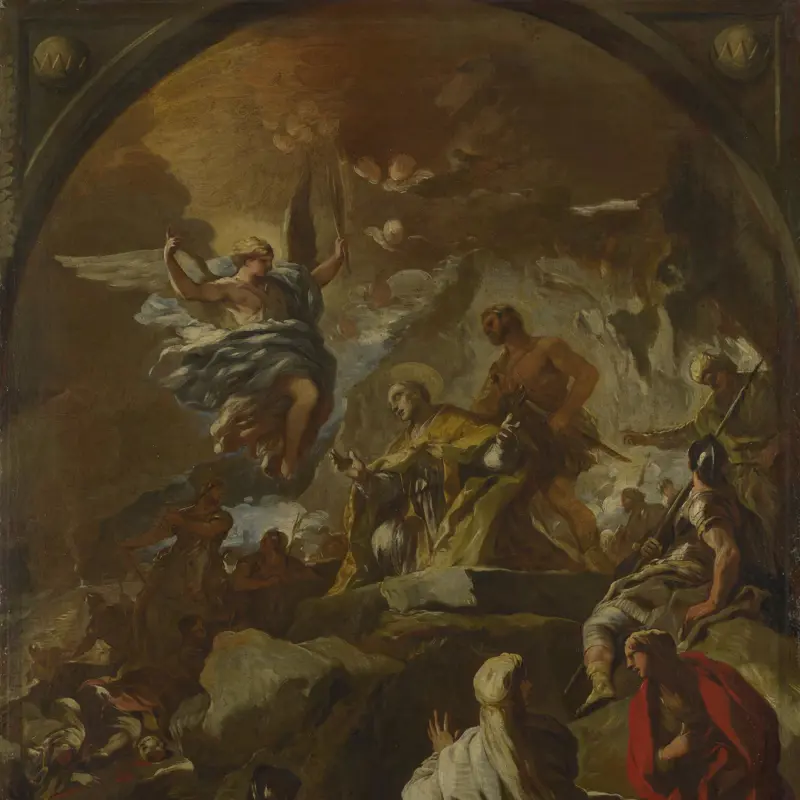Luca Giordano, 'Saint Anthony of Padua restores the Foot of a Man', before 1700
About the work
Overview
This is a preparatory sketch for one of a series of eight frescoes that Giordano painted on the walls just below the dome of the church of San Antonio de los Alemanes in Madrid. The frescoes depict miracles performed by Saint Anthony, and this sketch represents one of the stranger episodes in his life. When a young man named Leonardo confessed to Anthony that he had kicked his mother, the saint replied that the foot deserved to be cut off. When Leonardo did exactly that, Saint Anthony miraculously reattached it.
Here, Saint Anthony stands on the steps in his monk’s habit, holding the newly restored limb of the swooning Leonardo. Like the other seven episodes in the series, Giordano designed this fresco to look like a tapestry held up by the two angels at the upper corners – they seem to be unfurling the picture so as to reveal the miracle to the congregation in the church below.
Key facts
Details
- Full title
- Saint Anthony of Padua miraculously restores the Foot of a Self-Mutilated Man
- Artist
- Luca Giordano
- Artist dates
- 1634 - 1705
- Date made
- before 1700
- Medium and support
- oil on canvas
- Dimensions
- 105.5 × 80.3 cm
- Acquisition credit
- Presented by C.W. Dopson, 1901
- Inventory number
- NG1844
- Location
- Not on display
- Collection
- Main Collection
Provenance
Additional information
Text extracted from the ‘Provenance’ section of the catalogue entry in Michael Levey, ‘National Gallery Catalogues: The Seventeenth and Eighteenth Century Italian Schools’, London 1986; for further information, see the full catalogue entry.
Bibliography
-
1986Levey, Michael, National Gallery Catalogues: The Seventeenth and Eighteenth Century Italian Schools, London 1986
-
2001
C. Baker and T. Henry, The National Gallery: Complete Illustrated Catalogue, London 2001
About this record
If you know more about this work or have spotted an error, please contact us. Please note that exhibition histories are listed from 2009 onwards. Bibliographies may not be complete; more comprehensive information is available in the National Gallery Library.

